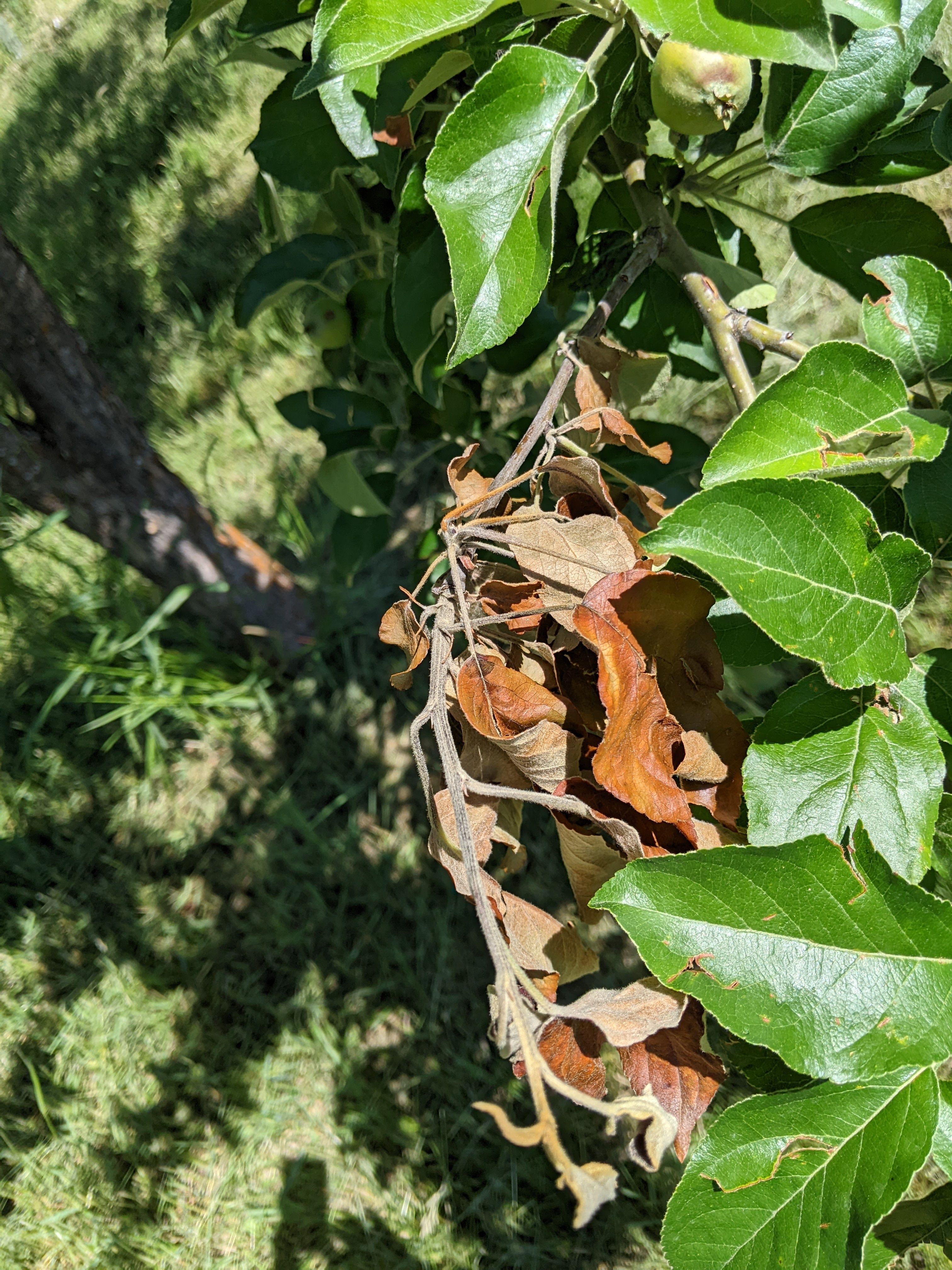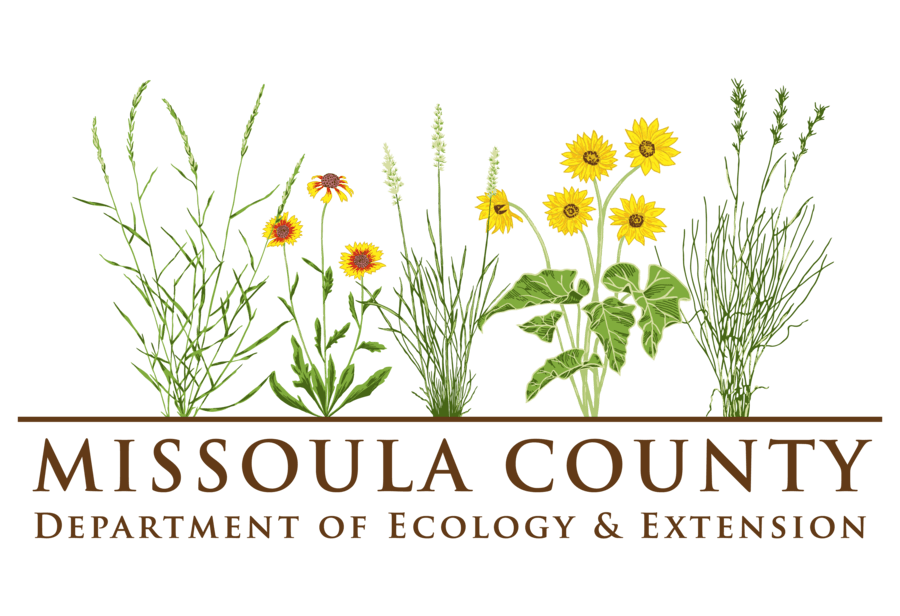
We are still catching Codling moths now at our sample sites. We are also seeing evidence of codling moth worms inside developing apples. If you want clean apples follow your spray of choice reapplication recommendations. WE have caught the western cherry fruit fly at multiple sites now, so keep spraying for the cherry fruit fly every 7-10 days until harvest is complete.
I am starting to see fire blight strikes(dead branches) so keep an eye out on your apple and pear trees and get them pruned out as soon as possible on a sunny dry day. I also trapped a apple maggot fly – sprays for you codling moth will take care of this hopefully. I haven’t got any feedback that it’s a major pest here yet.
Give all your landscapes a good soaking with the hot weather, established trees and shrubs need a 1-2 hour soak every 7-10 days. The best way to manage most pests and maintain plant health this time of year is to keep plants well-watered. Water-stressed plants develop papery-dry, whitish to brown, curled leaf margins. If you have fungus disease problems such as powdery mildew,1 Tbsp baking soda + 1 Tbsp horticultural oil per gallon of water, is the least toxic option. Disease will not spread in hot dry weather if you keep irrigation water off of branches and leaves. Water early in the morning, giving foliage time to dry.
Some aphid populations are decreasing. You may still see curled leaves from earlier aphid infestation, but few aphids are present inside curled leaves at most locations. Many black with blue and orange spots ladybug larvae are present now eating aphids. Avoid spraying insecticides that are hard on predators such as carbaryl or any of the synthetic pyrethroids.
Eriophyid mites are responsible for yellow to brown to red spots and blisters on apple, pear, and mountain ash leaves. The brown spots may coalesce and cause leaves to turn brown or yellow and drop. This mite damage looks a bit like disease spots at this time of year on apple leaves, so don’t be fooled. It is too late to spray for blister and rust mites now.
Spider mite populations are increasing. Check mite-susceptible plants such as juniper and rose. Insecticidal soap plus 1 tbsp/gallon of sulfur is the least-toxic option for mites. Spray in the evening or early morning.
Wilting spruce tree terminals (top branches) can mean White Pine Weevil larvae are feeding inside the tip branch. Remove and destroy wilted, browning spruce tips as soon as you see them. Be on the lookout for spruce budworm and tussock moth larva starting to be active and eating away at the new growth on spruce and douglas fir trees, Bt is your least toxic spray. Bt will not be effective for very long, as the caterpillars get larger they are not affected. Permethrin or Carbaryl are other options.
Grasshopper populations are on the rise this year in some locations. As grassy areas dry up, grasshoppers may move into gardens and landscapes. If they are a serious problem, you can apply carbaryl-treated bran baits to affected plants. These insecticide-laced baits can injure birds if they eat them. Hot pepper wax and garlic based repellants are not very effective if populations are high. Do NOT mow grassy or weedy areas near garden and landscape plants now since it may encourage grasshoppers to move into your plants. Row cover and polyethylene shade cloth may minimize grasshopper feeding somewhat. Keep grasshopper-attacked plants well-irrigated.
Knapweed is at first to full- bloom. Now is the best time to mow knapweed to diminish seed dispersal.
Colorado potato beetle larvae are present on potatoes, eggplants, and tomato-family garden weeds now, but populations are low. Spinosad can be sprayed in the late evening if populations are high. Some fungal leaf spot diseases are showing up in vegetable gardens now. Keep irrigation water off of foliage to avoid further disease spread.
